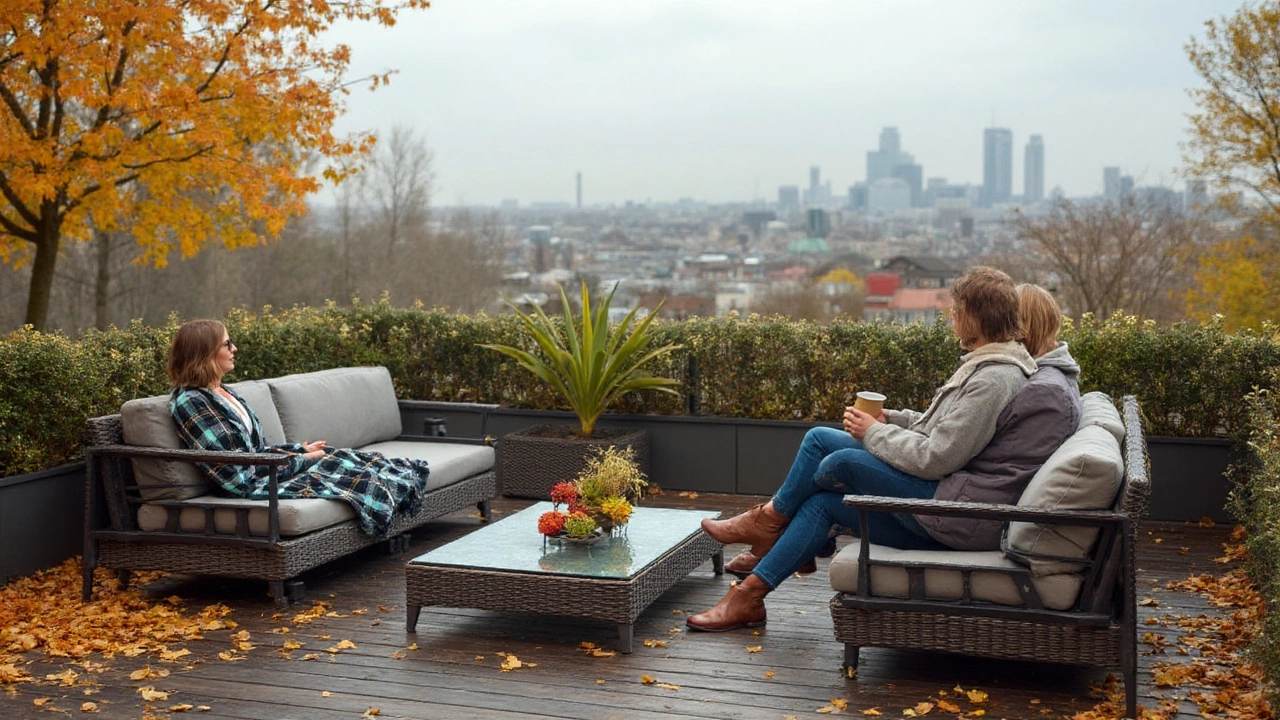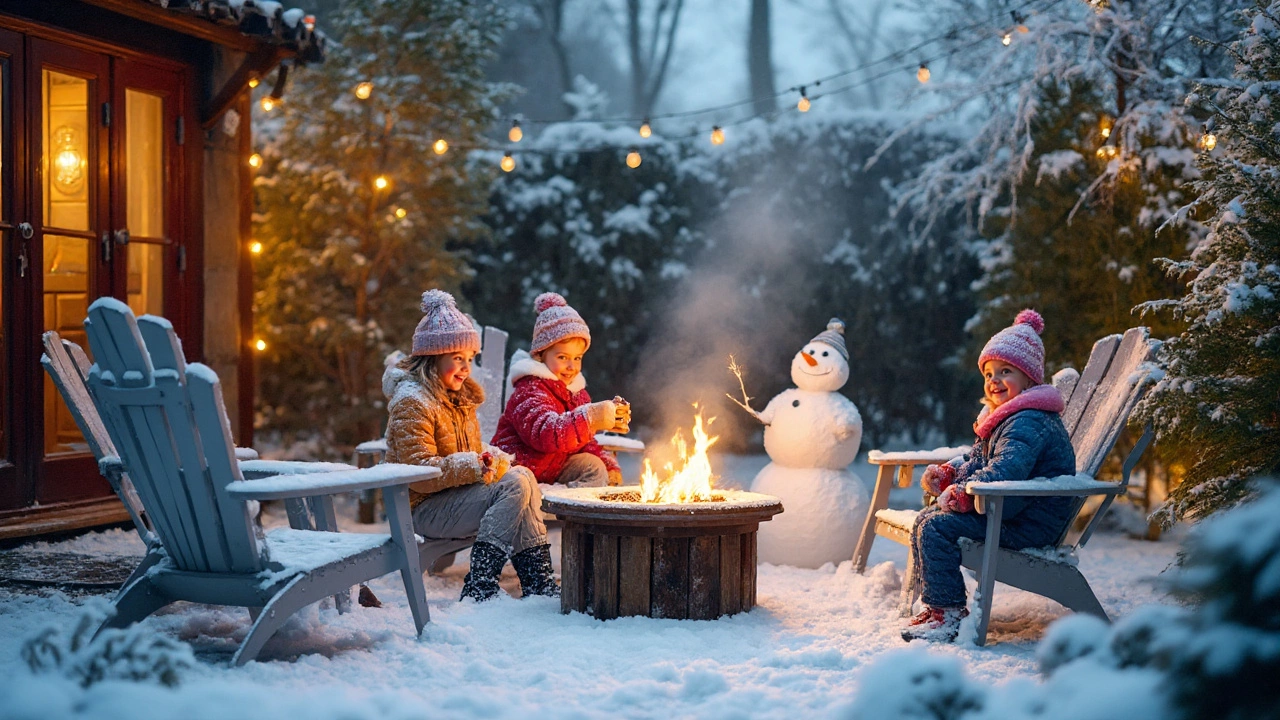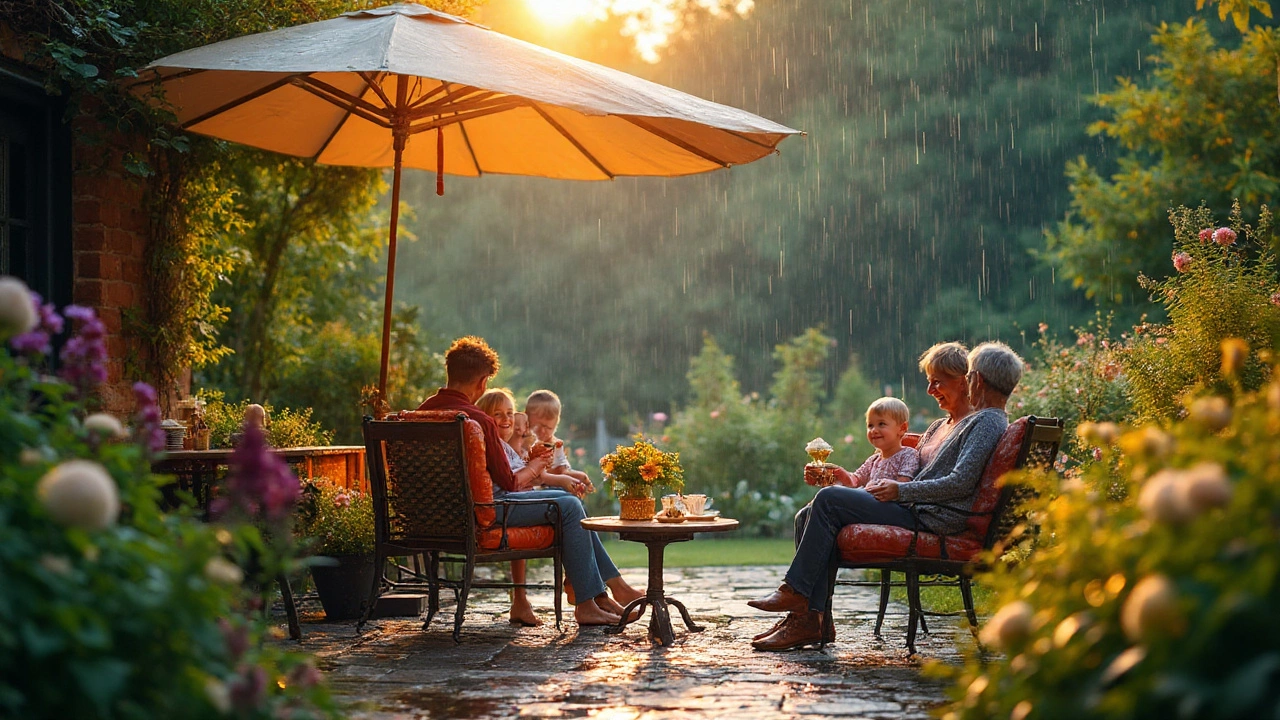Picture this: you splurge on a gorgeous new patio set, only to find it peeling, rusting, or falling apart after just one season. Weather can be brutal, and furniture that looks great in the store can turn into a regretful eyesore once it’s faced the elements outdoors. That’s why picking outdoor furniture that’s actually weather resistant isn’t just about style, it’s about making sure your investment survives more than one summer barbecue. Patio pieces are constantly fighting off sun, rain, wind, and maybe even some snow, so your focus should be sturdiness, not just looks. Ready to find the toughest, most practical materials for a patio that won’t let you down? Let’s get right into what really lasts.
The Science of Weather Resistance: What Really Matters Outdoors?
Not all materials are created equal when it comes to patio furniture. Every year, millions of dollars are spent on outdoor sets, but the products that really last have something in common—a resistance to the unending wear of Mother Nature. What’s going on at a scientific level? The problem starts with sunlight. The UV radiation in sunlight attacks both natural and synthetic materials, breaking chemical bonds. That’s what causes plastic and wood to fade and become brittle. Moisture, whether from dew, rain, or humidity, is equally unforgiving—it seeps into porous materials like wood, triggering rot and encouraging mold. Cold snaps and snow? That’s a stress test for metal joints and anything that can freeze, shrink, or crack. Then there’s the constant grind of wind, which blows dust and sand like sandpaper and can upend the light stuff.
Understanding these threats is your secret weapon. For example, a study by the American Society for Testing and Materials revealed that teak wood changed color and lost only about 9% of its hardness after two years of outdoor exposure, while untreated softwoods like pine lost over 30% and suffered deep cracks. Meanwhile, powder-coated aluminum barely shifted in color, showing why it’s become a go-to for commercial outdoor settings. A 2023 consumer report looked at 1,400 outdoor furniture owners across the US and Europe, finding that rust and fading were the top reasons people replaced patio furniture—not just breakage.
Mold is a sneaky culprit, too. According to the CDC, porous patio cushions and untreated woods are hotspots for bacteria and fungi after a single wet season. This is bad news for folks who leave their furniture out all year. And if your local forecast swings from blazing hot to stormy in a matter of hours (looking at you, Florida), keep in mind that rapid temperature changes can warp wood and crack plastics. It’s clear—if you want furniture that lasts, you need stuff that beats the odds on all these fronts.
Top Weather-Resistant Materials: Winners & Losers Compared
Let’s put the most popular patio furniture materials head-to-head and see who comes out on top. There are clear favorites when it comes to withstanding the weather—some shine under the sun, while others dissolve in a drizzle. Here’s what you really need to know.
- Aluminum: Lightweight and immune to rust, aluminum is king for wet climates or poolside setups. A good powder-coat adds color and prevents dulling. It won’t rot, warp, or crack, and you can move it around with one hand (handy, right?). If you want data, many hotels and restaurants use industrial-grade aluminum for outdoor venues, running furniture through five-plus years of rain, sun, and foot traffic with barely a scratch.
- Teak: If you love the warmth of real wood but hate maintenance, teak is your best friend. Its natural oils repel water and bugs, so it ages to a silver patina instead of falling apart. Teak furniture can survive decades—historical estates in England still use teak benches from the early 1900s! It does come at a price, though—you’re paying for that toughness.
- Resin Wicker: Forget old-school rattan that turns to mush in one wet season. Modern "all-weather" wicker uses polyethylene, which shrugs off sun, snow, and rain. When woven around an aluminum frame, resin wicker is one of the lightest and most durable options. If you see cracked, faded “wicker” at clearance sales, it’s probably cheap plastic, not the real deal.
- Stainless Steel: It’s heavy—think commercial patio or windy sites. It won’t rust easily, especially if it’s 304 or marine-grade. Cheaper grades might corrode, though, so always check what kind you're buying. Wipe down steel pieces, and they’ll last years, though you’ll want cushions because steel heats up quick under the sun.
- Plastic & Polywood: Not all plastic is flimsy. High-density polyethylene (HDPE) is used in benches in public parks. It resists UV damage and doesn’t splinter or crack. Polywood, made from recycled milk jugs, mimics painted wood but won’t rot or peel. Pricey, but it lasts roughly ten times longer than discount resin sets.
- Softwoods (Pine, Cedar): Even with sealants, flaky paint, and rot show up within a couple of seasons. Cedar is better than pine, thanks to natural oils, but both are mostly for bargain buys or covered spaces.
What about fabrics? Look for solution-dyed acrylics (like Sunbrella)—these fight fading way better than polyester or cotton blends. Solution-dyed fabric means the color is locked in from the fiber stage, not just surface-dyed, so your red or blue cushions don’t turn pink or gray after a summer.
| Material | Best Feature | Common Lifespan (Years) | Maintenance | Vulnerability |
|---|---|---|---|---|
| Aluminum | No rust, lightweight | 10-20 | Low | Dents, paint scratches |
| Teak | Natural oils repel water | 40+ | Low, if left gray | Expensive |
| Resin Wicker | UV- and water-resistant | 7-15 | Low | Cheap versions crack |
| Stainless Steel | Sturdy, rust-resistant | 20+ | Medium | Can get hot |
| HDPE Plastic/Polywood | Won’t rot or peel | 15-25 | Low | Less "natural" look |
| Pine/Cedar | Affordable | 2-7 | High (needs sealing) | Splinters, rot |
Notice how the biggest jump in longevity comes when moving from low-tier wood or plastic up to high-quality metal, teak, or HDPE. It’s not always about spending a fortune, but about picking a material that fits your weather and use habits.

Smart Buying: What to Look for in Durable Patio Furniture
Shopping for the right patio set isn’t just a game of picking what looks good on Instagram. If you want to avoid buyer’s remorse, pay attention to the little details—these can make all the difference in how your furniture copes with the weather. Always check how pieces are made. Welded joints on a metal frame are way sturdier than something that’s just bolted together. Cheap bolts rust, swell, and snap. Stainless steel hardware and brackets are always worth the upgrade. For wood, look for mortise and tenon joinery, not glue or staples, which will loosen under heat and humidity.
For resin wicker and plastics, bend a piece gently—stiffness and thick fibers are good. Thin, hollow-feeling pieces are usually the first to crack in sun or cold. And about cushions: removable covers with zippers make life easier, because you can wash or air dry them if you get a rainy spell or the neighborhood raccoon drops by with muddy paws. For fabric, you want weather resistant patio furniture made with solution-dyed acrylic or olefin fabrics, not low-cost polyester. Check for mesh or grommets on the bottoms—this lets water drain out after a downpour.
If you live in an area with high wind, heavy furniture is your best bet. Lightweight plastic chairs can end up in a neighbor’s pool. Look for seating with a bit of heft, or plan to anchor it. Another secret: industrial buyers (think restaurants and hotels) often look for warranties of five years or longer, even for heavy-use areas. If a brand is confident enough to back that up, they’re probably using top-of-the-line materials.
Color is more than just an aesthetic choice. Light-colored tabletops or seats won’t get blistering hot when the sun is out—and they tend to reflect UV rays better, reducing fade over time. Dark hues do fade faster and aren’t always practical if you have kids, pets, or frequent muddy footprints. Look for textured finishes that hide the small scratches and scuffs that happen with everyday use.
- Try before you buy if you can—sit down, lean back, check for wobble or flex.
- If possible, ask for a sample swatch of fabric or wood finish and leave it outdoors for a week to see how it reacts.
- Check return and warranty policies. Anything that lasts should be covered for at least two years—it’s a red flag if not.
- If you want to keep furniture outdoors year-round, avoid anything with softwood frames, basic iron, or indoor-only fabrics.
Secrets to Making Your Patio Set Last: Maintenance Tips & Hacks
Even the most rugged outdoor furniture benefits from a bit of TLC, especially when you’re facing unpredictable seasons or sudden weather swings. The good news is, a few easy habits will often double the life of your patio set. When it comes to aluminum and resin, your main job is to keep them clean. Dust, pollen, and bird droppings can stick and dull the finishes if left to bake under the sun. Use a soft sponge and a mild dish soap, then rinse and let pieces air dry. Skip the power washer on anything made of woven resin—too much pressure loosens the weave.
For wood, it depends on your style. Teak can be left to gray naturally with little more than a seasonal rinse, but if you want to preserve its honey-brown color, you’ll want to oil it once or twice a year using specific teak oil (not just any wood oil). Don’t bother with thick varnishes, they tend to peel off and look messy after a year or two. For other hardwoods, regular resealing is non-negotiable—go with products rated for UV and water protection.
Fabrics need special love. Even the best outdoor cushions last longer if you store them indoors during winter or sudden storms. If storage is tight, invest in a waterproof deck box. When spills or mildew pop up, clean promptly with diluted vinegar or a gentle bleach solution (check the fabric tag first). Dry everything thoroughly—mold thrives in damp creases. Every month, flip and reposition cushions to avoid uneven fade. And during spring, a quick check for spiders or insects saves nasty surprises when it’s time for the year’s first barbecue.
- Furniture covers: Even weatherproof sets last longer with a cover—think of it as sunscreen. Go for breathable types, not plastic tarps that trap moisture.
- Feet and legs: Add rubber or plastic glides to protect legs from soaking up water from wet patio stones or grass.
- Bolt checks: Inspect and tighten screws or bolts every spring—you’d be surprised how often a wobbly armrest is just a loose screw.
- If you stay in a hurricane-prone zone, stack or secure anything lightweight before a storm.
The little extras—pads under table feet, clip-on shade umbrellas, or storing small pieces under a roofed patio—help your gear defy the climate. Maintenance doesn’t have to be a chore. Ten minutes at the start and end of the season beats spending hundreds on replacements when spring rolls around again.

The Verdict: Choosing the Right Weather-Resistant Patio Furniture for Your Home
The best weather-resistant patio furniture comes down to matching your local climate with the right material and construction. Love gorgeous, zero-fuss pieces? Go for powder-coated aluminum or HDPE polywood—they handle sun, rain, and cold without drama. If your dream patio involves rich wood tones, teak wins for life span and natural repellency. Love the cottage-core look with woven seating? Just make sure it’s resin on an aluminum frame. For fans of hefty industrial style, stainless steel adds serious weight but needs softening up with cushions that specifically say "UV and mildew-resistant."
If you’re aiming for budget comfort without constant care, steer clear of basic iron, untreated pine, and any fabric that doesn’t clearly list outdoor specs. Mixing materials can work too: a teak table with aluminum chairs, or a resin wicker set with polywood armrests, lets you get the best of all worlds. Warranties, hardware, and cushion quality are often the difference between a set you’ll brag about for a decade and one that lands in a spring cleaning donation pile after a year or two.
Here’s something most folks miss: placement is key. Even the best pieces benefit from being under a pergola or shade sail, out of the direct line of rain gutters and away from damp ground. Match your setup with clever storage—a deck box for pillows, breathable covers for everything else—and your investment will look sharp through sun, rain, or snow. Nobody wants a patio set that turns shabby by the second season, so stack the odds in your favor. Not only does top-notch furniture boost comfort and curb appeal, but it also saves your wallet and the planet by avoiding the fast-furniture landfill cycle. Here’s to a backyard that’s always ready, no matter what the forecast throws your way.


Write a comment